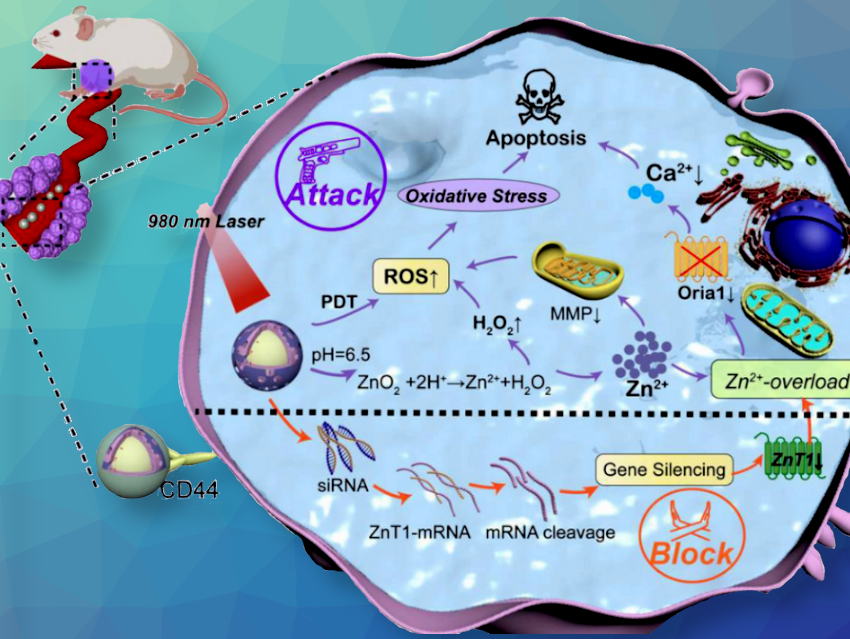Ion interference therapy is a potential cancer treatment strategy that involves using ion overloading to disrupt the balance of ions in tumor cells, leading to their destruction. Specifically, it aims to prevent tumor cells from regulating their intracellular ion concentrations, which results in the accumulation of certain ions, such as Zn2+, and the disruption of ion homeostasis in the cells. This disruption can lead to the production of reactive oxygen species (ROS) and other harmful effects that ultimately kill the tumor cells. The goal of ion interference therapy is to achieve efficient ion overload in tumor cells while minimizing damage to normal cells. While still in the experimental stages, this approach shows great promise.
Yuping Jiang, Qingdao Agricultural University, China, and colleagues have developed a multifunctional composite nanomaterial (UHSsPZH NPs) for the ion interference therapy of tumor cells, using the “block and attack”. UHSsPZH NPs means: upconversion nanoparticles-hypericin@mesoporous silica@polymine-small interfering ribonucleic acid@zinc peroxide@hyaluronic acid (UCNPs-Hy@mSiO2@PEI-siRNA@ZnO2@HA).

After being taken up by the cells, ZnO2 degrades from UHSsPZH NPs into Zn2+ and H2O2 in response to acidity. SiRNA is released from UHSsPZH NPs to target and silence the gene expression of the zinc transporter 1 (ZnT1) gene. This blocks the zinc ion efflux channel and leads to intracellular Zn2+ overload. This overload further disrupts intracellular Ca2+ homeostasis, inhibits the mitochondrial electron transport chain, and stimulates the production of endogenous reactive oxygen species (ROS). These effects coordinate with the exogenous ROS generated by UHSsPZH NPs under 980 nm laser irradiation to “attack” tumor cells.
- “Block and attack” strategy for tumor therapy through ZnO2/siRNA/NIR-mediating Zn2+-overload and amplified oxidative stress,
Yuping Jiang, Kai Shao, Fenglan Zhang, Tianyi Wang, Lei Han, Xiaoying Kong, Jinsheng Shi,
Aggregate 2023.
https://doi.org/10.1002/agt2.321




